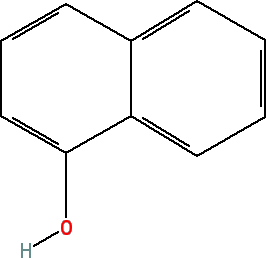1-Naphthol
Safety Information
Expert Panel for Cosmetic Ingredient Safety:
The safety of 1-naphthol has been assessed by the Expert Panel for Cosmetic Ingredient Safety. The Expert Panel evaluated the scientific data and concluded that 1-naphthol was safe as a hair dye ingredient. In 2006, the Expert Panel considered available new data on this ingredient and reaffirmed the above conclusion.
The Expert Panel reviewed studies with 1-naphthol indicating that this compound at low concentrations was neither an eye nor skin irritant. No significant toxicity findings were reported in either sub chronic or chronic laboratory studies. Hair dyes containing this ingredient when dermally applied were neither developmental toxicants nor carcinogenic.
The Expert Panel recognized that clinical data for 1-naphthol were not available. However, hair dyes containing 1-naphthol are exempt from two provisions in the Federal Food, Drug, and Cosmetic Act of 1938 when cautionary statements and instructions for patch testing are displayed conspicuously on the labels. Therefore, the Expert Panel did not require clinical testing.
1-Naphthol and its salts are listed in the Cosmetics Directive of the European Union (see Annex III, Part I). 1-Naphthol and its salts may be used as oxidizing coloring agents for hair dyeing up to a maximum concentration of 2%, when combined with hydrogen peroxide. Products containing 1-naphthol and must be labeled as indicated in Annex III.
